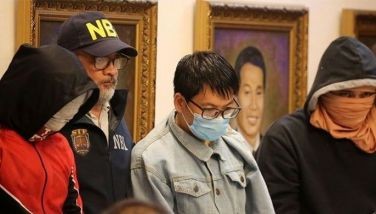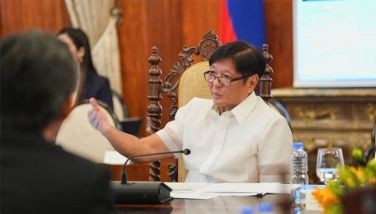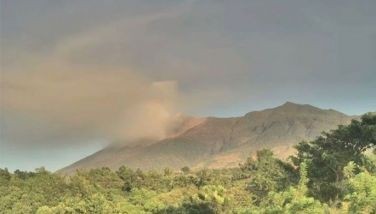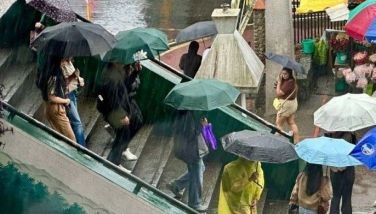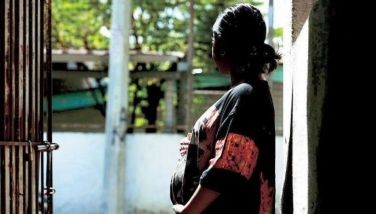Pocket parks, mixed-use spaces bring relief in Metro Manila's car-centric concrete
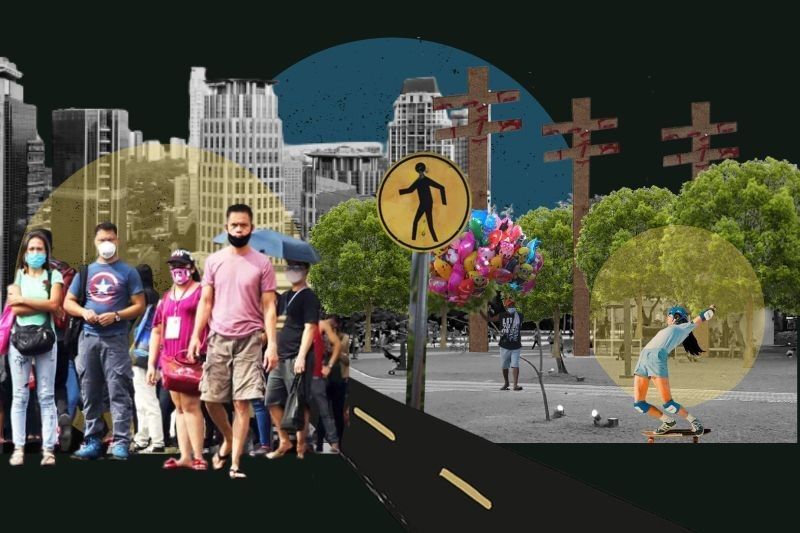
MANILA, Philippines — On the sunny afternoon of May 16, 2022, tourist Raine Baljak traversed several Metro Manila cities — Taguig, Makati and Mandaluyong — to get to an indoor sport climbing venue.
Filipina-Australian Baljak, a health science student in Australia, is accustomed to walking. She has lived in Tokyo, Japan for the past two years and has stayed in Hong Kong, Thailand, US, UK, Spain and Australia, and in Cebu. And so, when Google Maps recommended walking as the easiest and fastest way for her to reach Climb Central in Mandaluyong from her hotel in Bonifacio Global City in Taguig, she did not hesitate to follow the search giant.
"It was my first time to walk this distance and as a risk-taker, I thought it would be an efficient idea and a good warm-up prior to my rock climbing," Baljak told Philstar.com. Although there are initiatives to make Metro Manila more accommodating to pedestrians and people, Baljak's walk was a common experience for many commuters.
Baljak documented this under 30-minute walk in a TikTok video that would later go viral and make it to Philippine news sites.
@rainebaljak Here's what it's like to be a tourist walking in #Manila, #Philippines! ???? #Pinay #Filipina #filipinagirl???????? #tourist #asia #travel #visitluzon ? original sound - Raine Baljak
In her video titled "Attempting to walk in Manila," Baljak showed how she struggled walking from BGC to Mandaluyong due to a lack of walkways. She shared that Google Maps even made her cross a bridge, walk on a highway and on narrow sidewalks in the Metro Manila heat.
"I’m now walking on this highway because Google Maps says that it’s safe for pedestrians to walk on. I thought that down there, there would be like a place for pedestrians to walk on because that’s what I assumed," Baljak narrated in the video uploaded last June 23.
"Currently being a tourist in Manila. Very fun! Thank you, Google Maps," she quipped.
When Baljak reached Greenfield District, a mixed public and private space where Climb Central is, she let out a sigh of relief as the area finally had walkable spaces.
"As you can see, they actually have sidewalks here. Now, these are what you call real sidewalks. Thank you, Greenfield District of Mandaluyong for urban planning," she said, referring to a commercial development along EDSA.
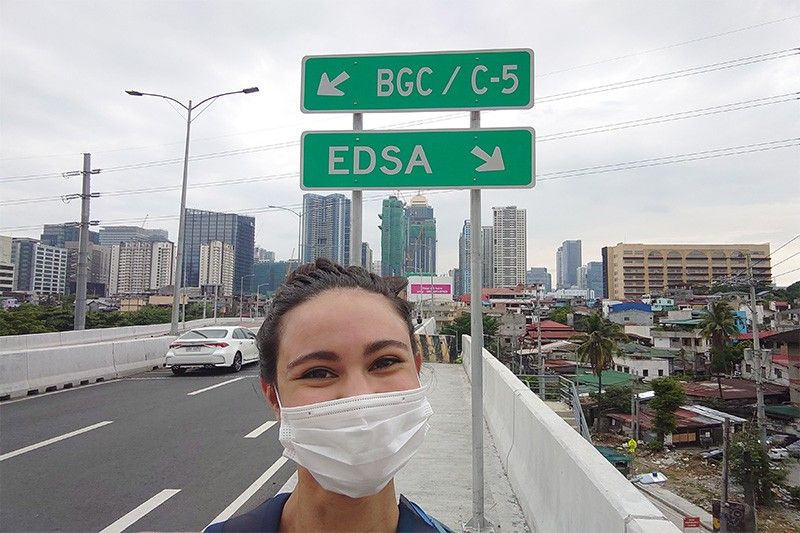
The video gained traction, earning 1.8 million views on TikTok so far and reached other social media platforms where it helped build clamor for proper infrastructure design that considers pedestrians over vehicles
"The World Health Organization says that, 'liveable cities are walkable cities', and the Philippines should prioritize pedestrians because it's our human right to walk," Baljak said.
"Additionally, most of Manila is so flat which makes it ideal for cycling so I hope that walking and cycling would be promoted by the government to not only improve the traffic, but also, the health of our citizens and visitors," she also said.
RELATED: The Road Ahead: Bike lanes a good start but more infra, policy changes needed
Walkability
Urban sprawl Metro Manila, or the National Capital Region — made up of 16 highly-urbanized cities and a municipality and home to an estimated 13.4 million population — should be walkable, according to Walkability Asia.org.
In an undated article, it cited that most trips in the metro are made by foot and bicycle because the average trip distance is low. It added that nearly 35% of destinations are within a 15-minute walk or bicycle ride.
However, based on Pedestrians First, a tool introduced by the New York-based non-profit Institute for Transportation and Development Policy that focuses on measuring people’s proximity to everyday needs — like open space, healthcare, education, and transit — Manila only has 17% car-free places as of 2020. This makes it hard for pedestrians to navigate the metro on foot.
Pedestrians have complained about the metro’s narrow sidewalks that they share with vehicles but also with vendors, electric posts and other infrastructure.
Metro Manila’s neighbor megacities, Bangkok, Thailand and Jakarta, Indonesia, also share the same issue.
Pedestrians First’s tool showed that Krung Thep (Bangkok) only has 11% car-free places while Jakarta registered lower with only 6% car-free places. ITDP said its tool relies on data from OpenStreetMap.
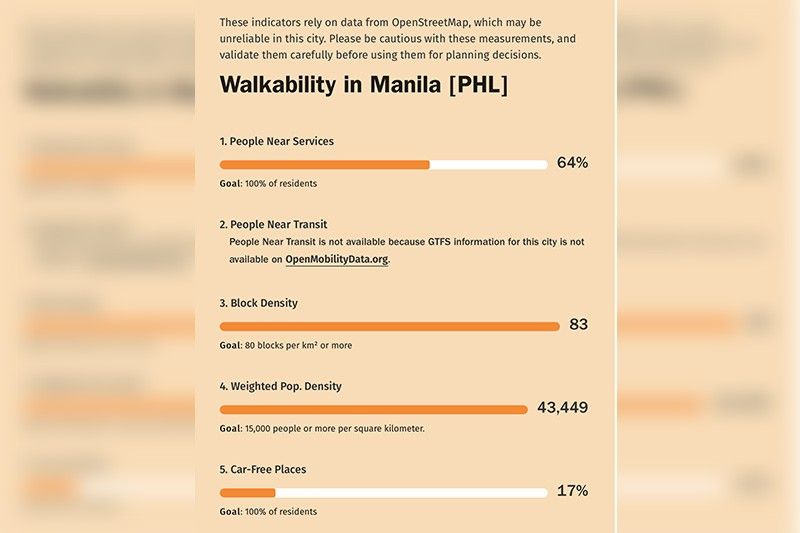
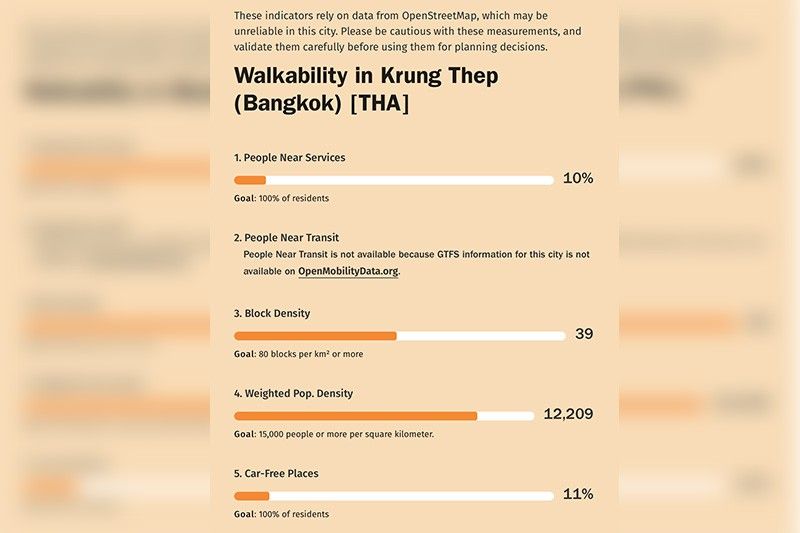
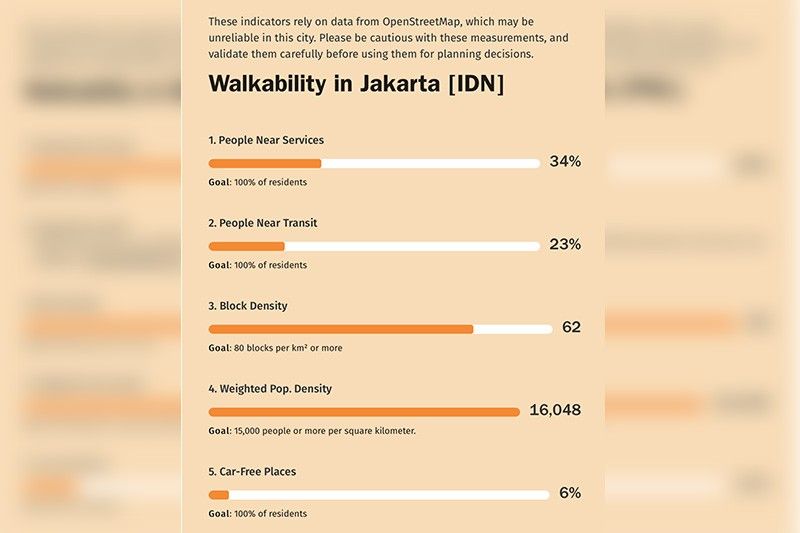
Lack of green spaces
With a low number of car-free places, finding communal green spaces in these megacities is also a challenge.
US Environmental Protection Agency defines green space as land that is partially or entirely covered with grass, trees, shrubs and vegetation. It is part of open space also described as "any open piece of land that is undeveloped (has no buildings or other built structures) and is accessible to the public."
Among the green spaces includes parks, community gardens and cemeteries.
The Department of Environment and Natural Resources-National Capital Region said that land satellite images indicate Metro Manila’s green spaces totaled 12,152.79 hectares as of 2014.
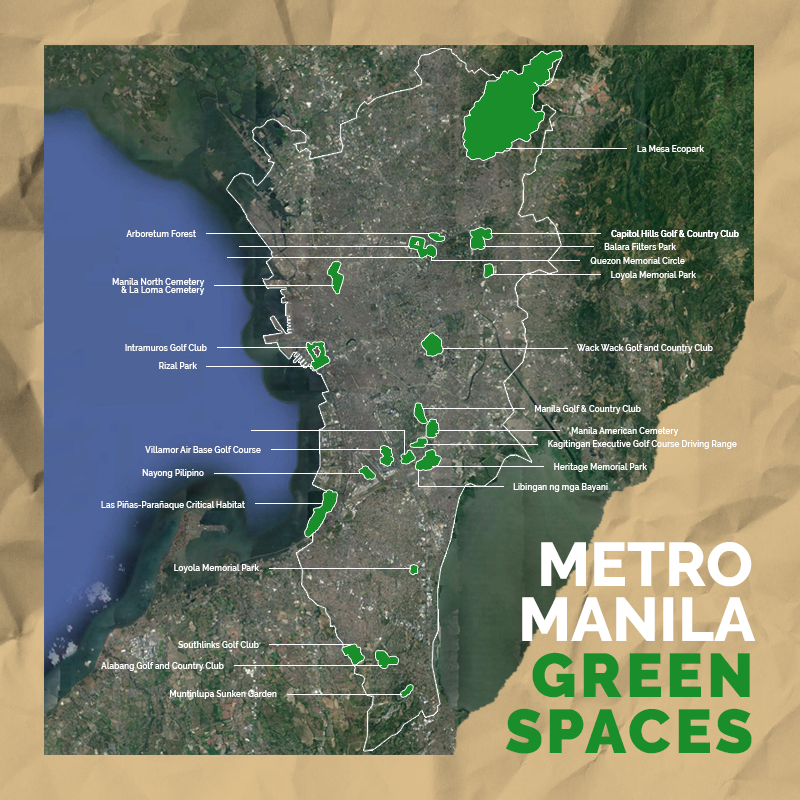
"NCR lacks about 80.60 hectares of green space," DENR-NCR Production Forest Management Section chief Arturo Calderon was quoted as saying in a 2019 briefing.
RELATED: There are only a few green spaces left in Metro Manila. Just look at this map.
The same is true for Bangkok, which recorded at least 8,922 public green spaces as of 2022, according to the data for public parks and green spaces of Bangkok Metropolitan Administration (BMA), according to the Bangkok Post.
The green spaces amount to a land area of 26, 329 rai or 4212.64 hectares serving the city’s registered population of more than nine million people.
This means the ideal ratio of 50 square meters of green space per person is not met as Bangkok residents only enjoy 7.6 square meters of green space per person.
The WHO requires at least 9 square meters of green space per head.
Jakarta also faces the same predicament. The Jakarta Post reported that, as of 2015, only 9.97% of the city comprised open green spaces. Of these, 6.9% are owned by the public sector while the rest of 3.07% of spaces are owned by private entities. The data is from the Jakarta Forestry and Public Cemetery Agency.
The figures, according to the report are way below the standards of Jakarta’s 2007 Spatial Planning Law which requires the megacity to reserve 30% of its total area for green spaces.
In Metro Manila, landscape architect and urban planner Paulo Alcazaren cited that the megacity has only 200 hectares of parks, giving 0.2 square meters of public parks and open spaces per person (PPOS).
"The goal is to provide a minimum 9 square meters PPOS per person with access to park within a ten-minute walk from home as in Singapore or New York City," he said at the first Philippine Parks Congress last November 24.
As of 2011, Manila Ranks 18th out of 22 major cities in Asia in terms of green space per capita as measured in square meters per person, according to Asian Green Cities Index.
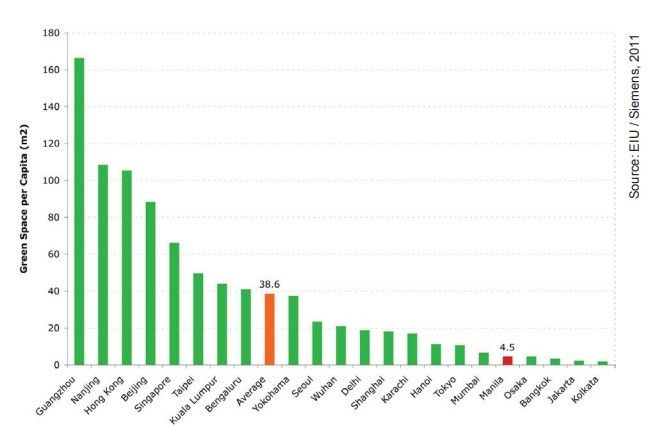
A 2014 report titled "Metro Manila Greenprint 2030," prepared by the Metropolitan Manila Development Authority in collaboration with World Bank Country Sector Coordinator Yan Zhang and urban planning consultants, also described the metro’s green spaces as "disconnected and dwindling."
Government agencies recognized this lack of green space and the need to integrate more of it into urban planning.
"As you all know, the COVID-19 pandemic has triggered important conversations about the importance of urban green spaces and how those should be designed to benefit the health and well-being of the local population not just to promote sustainable development for our community, but also to attract tourists and enhance the tourism experience," Nayong Pilipino Foundation Executive Director Gertie Duran-Batocabe said at the Parks Congress.
National Parks Development Committee (NPDC) data revealed that urban parks visitors reached over three million from January to November 2022. This is a more than 50% increase from 2021’s 1.5 million visitors.
‘Little breather’
Despite the huge turnout, many residents are still struggling to gain access to the government’s urban parks and are instead enjoying private firms’ mixed-use spaces. Majority of the malls and real estate companies in the metro incorporated parks and open spaces in their developments.
Banker Chrizel Ann Almodiel said she had to travel longer to visit public parks such as the Ninoy Aquino Parks and Wildlife Center and the University of the Philippines’ gardens and mini-parks in Quezon City. Thus, malls with open spaces and gardens have been a blessing for her.
She visits shopping malls’ mini parks such as Glorietta’s Top of the Glo, Greenbelt, SM North’s Sky Garden and TriNoma’s Rooftop Garden, among others.
"It serves as a ‘little breather.’ The parks or garden spaces within the malls help me rest and reflect. Plus, the plants freshen my mind. It’s less suffocating there," she told Philstar.com in mixed English and Filipino.
Like Almodiel, Karen Trinidad, an employee who works in Makati City, found relief in pocket parks surrounding the business district.
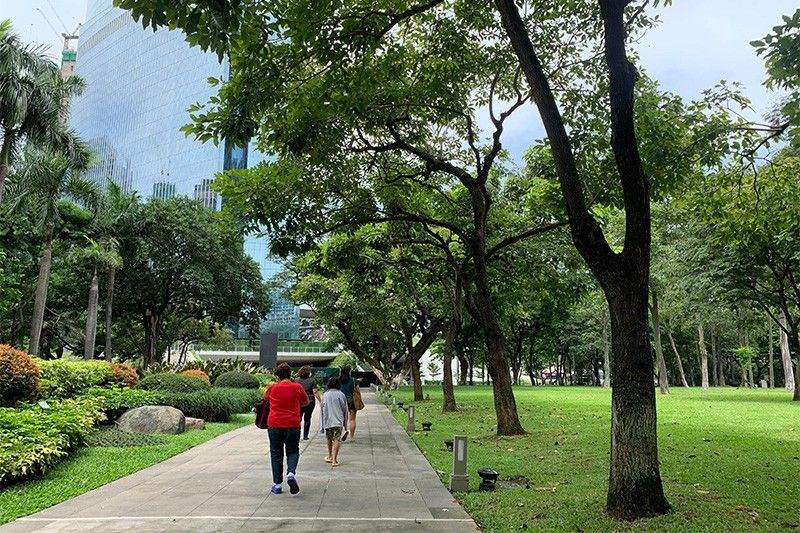
"First, that’s where I run. For me, they are safe for running. They’re also convenient because they are near our office. And then there are greens that are relaxing. It’s a bonus that there are cute fur babies walking there," she said, referring to privately owned public spaces and parks like Legazpi Active Park, Washington Sycip Park and Ayala Triangle Gardens.
"I like parks. I hope there will be more of them. It relieves stress and mental fatigue. The plants bring fresh air," Trinidad added.
Government efforts
Recognizing the need for more public open spaces, the Department of Budget Management (DBM) initiated “Green, Green, Green” in 2018. The program, formally launched in 2019, seeks to make 145 cities in the country, not just in Metro Manila, more livable and sustainable through the development of these communal spaces. It likewise aims to increase the connectivity and accessibility of these green spaces.
The Duterte administration allotted P2.5 billion for the project wherein the allocation for each city was based on the population count and land area measurements.
Among the projects solicited under this initiative is Quezon City’s GORA lane (Green Open Reclaimed Access) project. It is a 5.39-kilometer redeveloped pedestrian corridor dubbed the Green, Open, Renewable, Access (GORA) lane.
The QC government said the project, completed in 2021, included the creation of wider sidewalks and pocket parks that incorporate planting strips, wayfinding signage, better lighting as well as public art installations.
The lane passes through Doña Hemady Avenue, Scout Tobias, and Mother Ignacia and provides residents access to three major roads: Aurora Boulevard, Quezon Avenue, and EDSA.
The local government unit said this project aims to boost the economy as it connects to major transportation lines such as LRT 2-Gilmore Station, MRT-3-GMA Kamuning Station, and MRT-3-Quezon Avenue Station. It also connects to commercial areas like Gilmore, Robinsons Magnolia, Tomas Morato, and Timog.
Quezon City Mayor Joy Belmonte in May 2021 expressed hopes that through this project, the residents will favor walking to their last-mile destinations over riding their vehicles.
"Our residents deserve more open space than ever and our recovery will come to life on these streets," she also said.
QC resident Ralph was among those who benefited from the project.
Prior to the construction of GORA lane, he would go to QC Memorial Circle and UP Diliman on weekends and gym on weekdays to jog. He found relief from the new lane.
Okay as a person who’s deathly afraid of getting hit by cars, QC’s Gora Lane around Timog/Tomas Morato area is such a relief. I read somewhere that it’s almost 6km long. Pwede na magjogging ???? pic.twitter.com/WibjRI9ZUw
— Ralph | #ThesisEra (@maroontito) June 4, 2021
"I walk my dog every day, sometimes twice a day. The GORA Lane is spacious and allows me and my dog to have a leisurely walk without having to worry about cars parked on sidewalks and other obstructions. It’s also nice to have those map structures along various areas of the lane," he said in an online interview with Philstar.com.
Ralph is hopeful that there would be more pedestrian lanes for residents like him who prefer walking short distances than riding tricycles, jeeps.
Challenges
Despite the good intention of the government’s "Green Green Green" project, landscape architect Don Patrick Manlangit, founder, and CEO of Eco Haven design and former project lead of DBM said urban greening came with challenges.
He cited the following challenges:
- Project continuity
- Limited funding
- Operations and maintenance of completed projects
- Technical assistance and partnerships.
With leadership changing every now and then, Manlangit stressed the need for a national framework for parks development to achieve continuity of projects. For DBM alone, he said Cabinet secretaries can be replaced and department plans and budget appropriation likewise shifted.
"It really depends on the undersecretary or of the current administration if he or she will this project," the architect said at the Parks Congress.
For the "Green Green Green," Manlangit said the funding was exclusive to cities.
"So, there's a need to include other municipalities as well as they progress or develop so that they can have an access to funding for parks," he said.
The former DBM lead also said most projects are turned over to the LGU, which sometimes needs additional funding to support monthly or annual maintenance of these parks.
"Because once we develop really beautiful parks, but it's not well maintained because there's no available funding, or there's no support from that…It’s just sad because it [becomes] dilapidated and deteriorated in the wild," Manlangit said.
While there are many practicing landscape architects in the country, Manlanagit said there were only a few who worked on the project in over 100 cities. Hence, the need for technical assistance.
The architect said he also mentioned the need for partnerships because the DBM planned to hold educational workshops and study tours to create awareness of good design projects and how these can be implemented in different localities.
Laws and plans
Currently, there are three bills lobbying for the act establishing the Philippine National Public Parks System and Appropriating funds. These are:
- House Bill No. 618 – Filed by Rep. Christopher de Venecia (4th District, Pangasinan)
- House Bill No. 3495 – Filed by Rep. Geraldine Roman (1st District, Bataan)
- Senate Bill No. 837 – Filed by Sen. Loren Legarda
The proposed measure would establish and develop parks and recreational facilities in open spaces in cities and municipalities for public use. The Senate bill said that the establishment of these spaces promotes the health and well-being of citizens as well as boost tourism.
The act, pending approval, would mandate the coordination and cooperation of policies, plans, and programs of different concerned sectors of Philippine society.
These plans for the country are similar to the move of its neighbors Bangkok and Jakarta that also eye to ramp up their green spaces.
In Bangkok, BMA launched 15-minute Pocket Parks project “to ensure easy access to greenery for all residents.” On the other hand, Jakarta’s newly appointed acting governor Heru Budi Hartoni, vowed to continue the construction of new parks and restore old ones to address the demand for public green spaces.
Meanwhile, Philippine government agencies expressed support for the development of parks and related legislation that will strengthen the creation of parks in Metro Manila and other parts of the Philippines.
"While there's still momentum and support for the development of more parks nationwide, now is also the time to push for legislation to create an authority for parks and open spaces that will be truly national in scope and can provide guidelines to our LGUs," Cecille Lorenzana Romero, executive director of the National Parks Development Committee, said at the Parks Congress.
Tourism Secretary Christina Frasco joined in backing these plans and said that the Department of Tourism, through its concerned attached agencies, already started reaching out to LGUs in the country to provide them assistance and guidance in parks development in their respective areas.
She stressed the importance of parks and open spaces that, according to the Philippine Development Plan 2017-2022, should feature inclusivity to allow dialogue and cultural exchange among everyone.
"Parks are important because it allows us and our families to commune with nature, to spend quality time with each other, and to remind us that despite how busy life may get, we must always take time to relax, unwind, and spend time to be in touch with nature and commune with the Earth," Frasco said
--
This story was done in collaboration with DW Akademie
- Latest
- Trending





















